Written by: Heather Sees, president of the GreenbacksPhotos by: Emma Brown
Colorado TU, with help from The Greenbacks of Trout Unlimited, strive to educate, connect with, and influence the next generation to become conservation stewards and active participants in the fly fishing community. We recently had the opportunity to partner with a new camp, Forward Rising to accomplish just this.
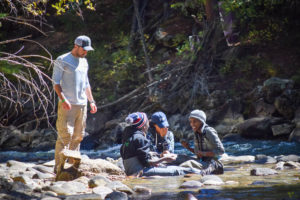 Forward Rising Inc, the creator of Forward Rising camp, is a new organization that focuses on engaging inner city girls through conservation, fishing, and the great outdoors. The organization hopes to use these activities to offer the girls outlets to the challenges they face.
Forward Rising Inc, the creator of Forward Rising camp, is a new organization that focuses on engaging inner city girls through conservation, fishing, and the great outdoors. The organization hopes to use these activities to offer the girls outlets to the challenges they face.
The weekend kicked off when the Girls, Inc. of Metro Denver van arrived at Lynwood Park in Bailey, CO with six young ladies who were eager, yet a bit hesitant, for the jam packed weekend! As the young ladies got off the van there was a bit of a buzz about what the weekend had in store for them. We kicked off the weekend Friday evening by having a team building exercise where the girls worked together to set up their tents and sleeping bags. After “home” was established the girls were introduced to the amazing team of volunteers and we all participated in ice-breaker games to get to know each other a bit better.
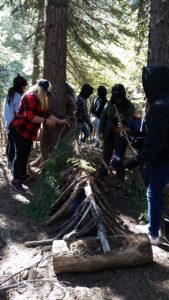 Saturday morning started out pretty chilly so everyone was moving a bit slower, but you could sense the excitement in the air! We kicked off our day with a session on wilderness survival from Mary Margaret Sweeney, PhD – Director at Way of the Wild. Mary spoke about the basics of wilderness survival, emergency shelter construction (with participation and help from the girls) and instruction on how to build a one minute fire. Overall, the young ladies walked away with knowledge on what to do in an emergency if they find themselves in that situation. Following the wilderness survival presentation, we had the pleasure of having Luke Caudillo, UFC fighter, speak to the group about overcoming challenges and following your dreams.
Saturday morning started out pretty chilly so everyone was moving a bit slower, but you could sense the excitement in the air! We kicked off our day with a session on wilderness survival from Mary Margaret Sweeney, PhD – Director at Way of the Wild. Mary spoke about the basics of wilderness survival, emergency shelter construction (with participation and help from the girls) and instruction on how to build a one minute fire. Overall, the young ladies walked away with knowledge on what to do in an emergency if they find themselves in that situation. Following the wilderness survival presentation, we had the pleasure of having Luke Caudillo, UFC fighter, speak to the group about overcoming challenges and following your dreams.
After a short lunch break we kicked off the rest of the afternoon focused on entomology, fly tying and fly fishing. 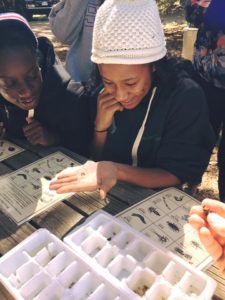 The girls suited up in waders and boots and headed to North Fork of the South Platte River to search for bugs. After turning over rocks and doing the “San Juan shuffle” in front of the bug seines we came away with a few bugs that would later be identified as mayflies, small craw-fish and a couple worms. After a lesson in entomology and discussions around the importance of healthy rivers we tied up some San Juan worms in hopes of tricking the fish!
The girls suited up in waders and boots and headed to North Fork of the South Platte River to search for bugs. After turning over rocks and doing the “San Juan shuffle” in front of the bug seines we came away with a few bugs that would later be identified as mayflies, small craw-fish and a couple worms. After a lesson in entomology and discussions around the importance of healthy rivers we tied up some San Juan worms in hopes of tricking the fish!
The time had come – rods were rigged up, safety and catch and release practices were discussed and each young lady was paired up with a volunteer to try their hand at fly fishing. Shortly after we hit the pond there were screams of excitement – missed fish! After switching up bugs we heard the words that any angler wants to hear “FISH ON!” For the next couple hours we saw several fish to the net – some girls got it on their own, some with a little help, but the end result was the same. After a few hours of catching fish we had a quick dinner and ended the night with a campfire, s’mores, stargazing, a quick visit from Fraser the Fish and reflection on the past couple days!
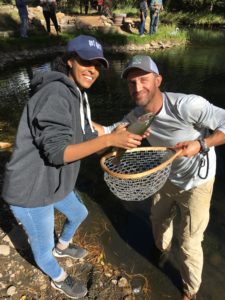 Sunday morning came faster than we expected and the weekend was coming to an end. The weekend contained many firsts – 1st time being in the river, 1st time putting up a tent and sleeping outside, 1st time catching a fish, 1st time making s’mores, 1st time seeing the stars and for some, 1st time being out of Denver. As we cleaned up camp and packed up the van there was still a lot of excitement about the weekend!
Sunday morning came faster than we expected and the weekend was coming to an end. The weekend contained many firsts – 1st time being in the river, 1st time putting up a tent and sleeping outside, 1st time catching a fish, 1st time making s’mores, 1st time seeing the stars and for some, 1st time being out of Denver. As we cleaned up camp and packed up the van there was still a lot of excitement about the weekend!
The 1st annual Forward Rising camp was a huge success, a GREAT time was had by all and we had the opportunity to share our passion and knowledge with the next generation!
A special thanks goes to the sponsors of the camp: Bass Pro Shops, Colorado Parks & Wildlife, SaraBella Fishing, Urban Anglers, Pig Farm Ink. The camp couldn't have been done without their generous support and donations to CTU, The Greenbacks, Forward Rising, and Girls Inc of Metro Denver.




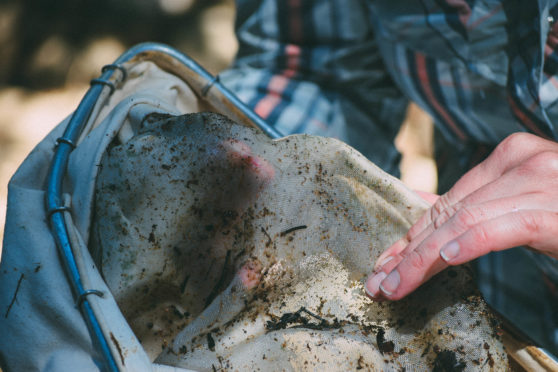
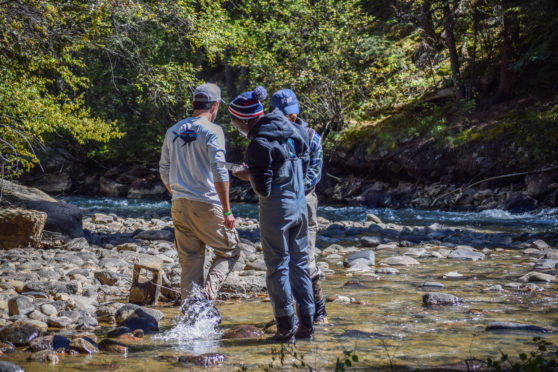






 Our chapter's ongoing conservation work on the South Platte River near Deckers strikes a chord with me. One of my earliest memories of being outdoors with my Dad is when he would take me there with his buddy and I would play in the shallows at the edge of the river. Later my good fishing buddy/college roommate and I spent many a pleasant weekend camping there and fishing those waters. Later on I had a great dog, a lab mix, and he would love to go along. We would do our best to keep him out of the water to avoid scaring fish, but he always managed to come home soaked, muddy, and contented. My buddy is busy with family now, and both my father and the dog have passed on. When the Hayman Fire roared through the area it broke my heart. Now the river is recovering with the help of our efforts, those of CUSP, and others. I am honoring the memories of those times I have spent on that river when I do my share to preserve its health and beauty.
Our chapter's ongoing conservation work on the South Platte River near Deckers strikes a chord with me. One of my earliest memories of being outdoors with my Dad is when he would take me there with his buddy and I would play in the shallows at the edge of the river. Later my good fishing buddy/college roommate and I spent many a pleasant weekend camping there and fishing those waters. Later on I had a great dog, a lab mix, and he would love to go along. We would do our best to keep him out of the water to avoid scaring fish, but he always managed to come home soaked, muddy, and contented. My buddy is busy with family now, and both my father and the dog have passed on. When the Hayman Fire roared through the area it broke my heart. Now the river is recovering with the help of our efforts, those of CUSP, and others. I am honoring the memories of those times I have spent on that river when I do my share to preserve its health and beauty.

 “It’s just transfer. It’s not like we’re selling them.”
“It’s just transfer. It’s not like we’re selling them.”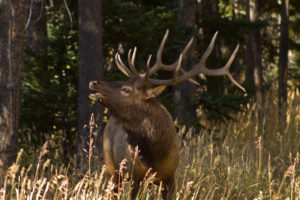 Public lands are for anglers, hunters, hikers, campers, backpackers, energy producers, mountain climbers, berry pickers, ranchers, horse packers, birders, timber operators, miners, snowmobilers, ATVer’s, mountain bikers.
Public lands are for anglers, hunters, hikers, campers, backpackers, energy producers, mountain climbers, berry pickers, ranchers, horse packers, birders, timber operators, miners, snowmobilers, ATVer’s, mountain bikers. Public lands are part of what define us as Americans. They are what remain of the great westward migration of the nation. They are the crucible upon which the character of the nation was formed. Our forebears left these lands to us, not so we could sell them to the highest bidder. They left them to us as an heirloom to pass on intact to the next generation. These lands are our birthright. They are a beacon of blinding and unwavering light on what it means to be free.
Public lands are part of what define us as Americans. They are what remain of the great westward migration of the nation. They are the crucible upon which the character of the nation was formed. Our forebears left these lands to us, not so we could sell them to the highest bidder. They left them to us as an heirloom to pass on intact to the next generation. These lands are our birthright. They are a beacon of blinding and unwavering light on what it means to be free.
 Because of this, fishing where feeder streams and tributaries confluence with larger streams is a good place to look as trout will be moving into these areas to spawn. "While we never advocate fly fishing for actively spawning fish that are on shallow gravel redds, these tributaries allow anglers to predict where to find larger fish,"
Because of this, fishing where feeder streams and tributaries confluence with larger streams is a good place to look as trout will be moving into these areas to spawn. "While we never advocate fly fishing for actively spawning fish that are on shallow gravel redds, these tributaries allow anglers to predict where to find larger fish," 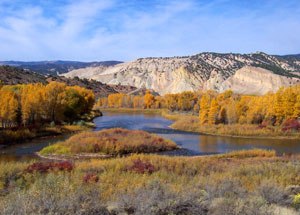 With blue wing olives as the primary food source, blue wing fly patterns are a primary "go-to" for fall anglers. But according to Vail Valley Anglers, size is more important than pattern, "Flies mimicking these bugs (BWO) should range from #18-24. This is more important than the actual fly pattern. Choose flies in olive or grey such as the trusty Parachute Adams, Sparkle RS-2, CDC Loop Wing Emerger or JuJu Baetis."
With blue wing olives as the primary food source, blue wing fly patterns are a primary "go-to" for fall anglers. But according to Vail Valley Anglers, size is more important than pattern, "Flies mimicking these bugs (BWO) should range from #18-24. This is more important than the actual fly pattern. Choose flies in olive or grey such as the trusty Parachute Adams, Sparkle RS-2, CDC Loop Wing Emerger or JuJu Baetis."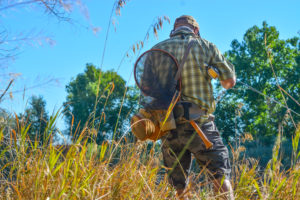 For the last 10 years, Denver Trout Unlimited has hosted the
For the last 10 years, Denver Trout Unlimited has hosted the  Chris Galvin, defending champion, hooked into one of the Mile High Stadium carp under the I-25 bridge and carefully moved it downstream in order not to disturb the pod. Ten minutes later, he tricked another for a masterful 2 fish within a few minutes. He added another only ten minutes before the morning session ended to take the lead going into the lunch break at Black-Black Cafe.
Chris Galvin, defending champion, hooked into one of the Mile High Stadium carp under the I-25 bridge and carefully moved it downstream in order not to disturb the pod. Ten minutes later, he tricked another for a masterful 2 fish within a few minutes. He added another only ten minutes before the morning session ended to take the lead going into the lunch break at Black-Black Cafe. Second place was snatched by Trevor Tanner and Kyle Richards. Third place went to the team of Frank Smethurst and rookie Vernon Naake with 3 fish for 70.38 inches.
Second place was snatched by Trevor Tanner and Kyle Richards. Third place went to the team of Frank Smethurst and rookie Vernon Naake with 3 fish for 70.38 inches.

